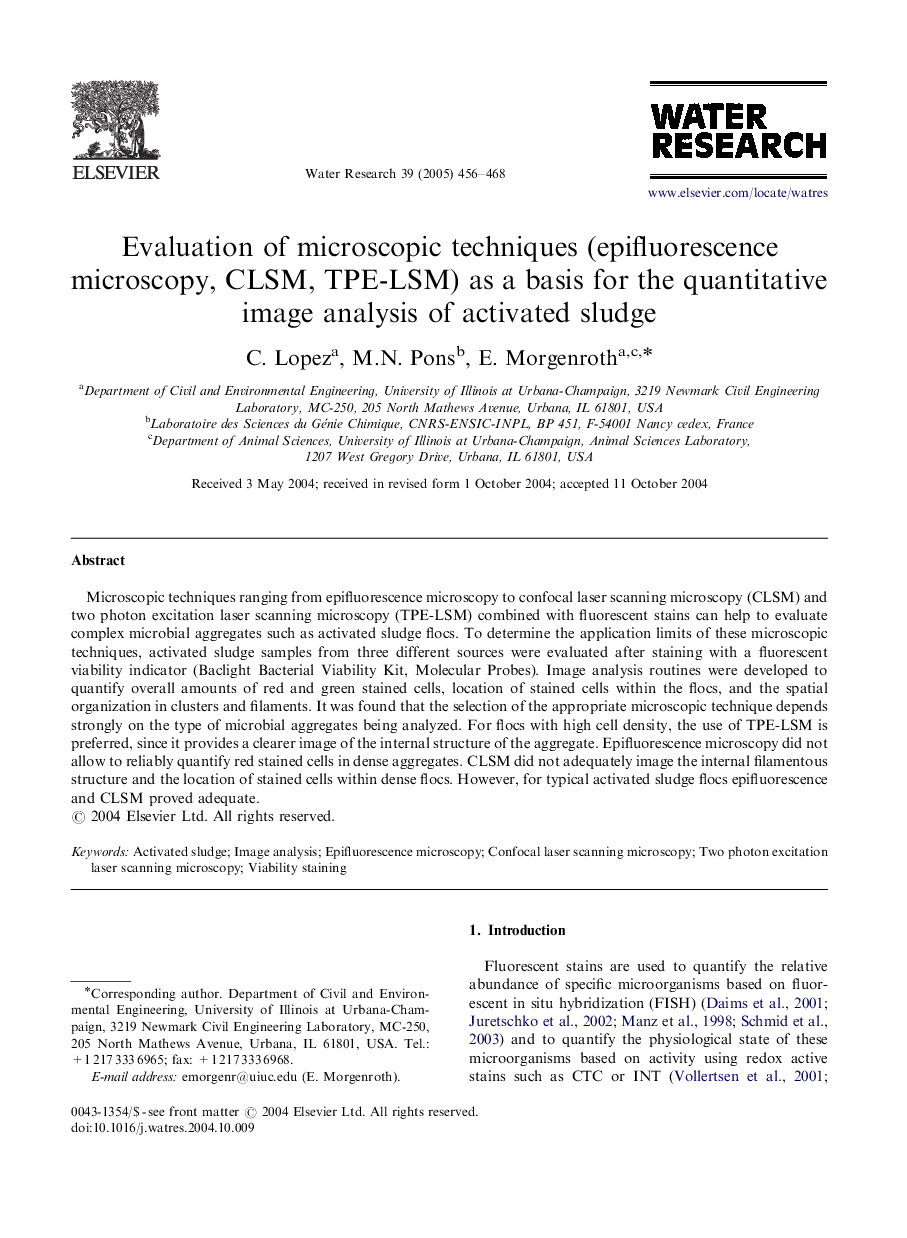| Article ID | Journal | Published Year | Pages | File Type |
|---|---|---|---|---|
| 9468494 | Water Research | 2005 | 13 Pages |
Abstract
Microscopic techniques ranging from epifluorescence microscopy to confocal laser scanning microscopy (CLSM) and two photon excitation laser scanning microscopy (TPE-LSM) combined with fluorescent stains can help to evaluate complex microbial aggregates such as activated sludge flocs. To determine the application limits of these microscopic techniques, activated sludge samples from three different sources were evaluated after staining with a fluorescent viability indicator (Baclight Bacterial Viability Kit, Molecular Probes). Image analysis routines were developed to quantify overall amounts of red and green stained cells, location of stained cells within the flocs, and the spatial organization in clusters and filaments. It was found that the selection of the appropriate microscopic technique depends strongly on the type of microbial aggregates being analyzed. For flocs with high cell density, the use of TPE-LSM is preferred, since it provides a clearer image of the internal structure of the aggregate. Epifluorescence microscopy did not allow to reliably quantify red stained cells in dense aggregates. CLSM did not adequately image the internal filamentous structure and the location of stained cells within dense flocs. However, for typical activated sludge flocs epifluorescence and CLSM proved adequate.
Keywords
Related Topics
Physical Sciences and Engineering
Earth and Planetary Sciences
Earth-Surface Processes
Authors
C. Lopez, M.N. Pons, E. Morgenroth,
